Submitted by WA Contents
Children attend teaching courses in between red-colored free standing walls in rural village of China
China Architecture News - Aug 15, 2019 - 04:22 12223 views
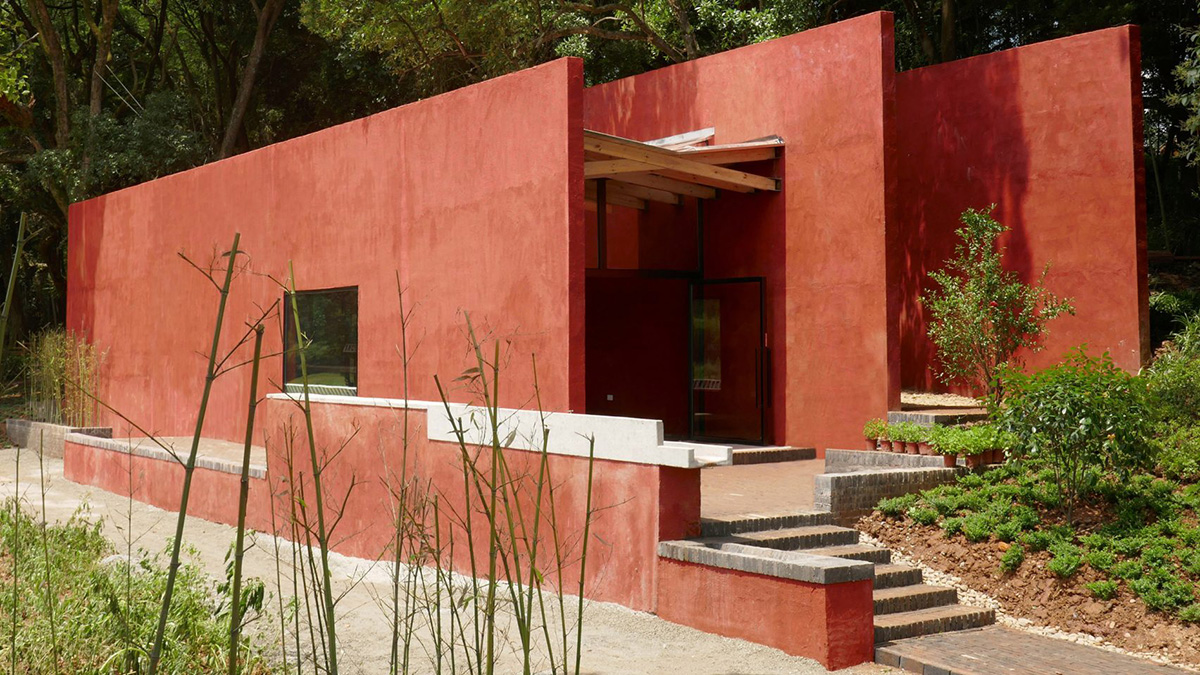
Five parallel red-colored walls provide spaces for teaching courses for children in a rural village Xiamutang, located in south-eastern China. Named The Walls Children’s Teaching Restaurant, the building was designed by The Scarcity and Creativity Studio, Tianjin University School of Architecture and AHO to evaluate rural villages of China that can be a model for experimentation.
"China’s explosive growth has been fueled by a large rural to urban migration which has left large parts of the countryside depopulated. At present China is losing around 300 rural villages per day and the Chinese government is looking for rural development models capable of preserving rural life, considered the foundation of traditional Chinese culture and values," said the architects.
"Growing affluence allows an increasing number of Chinese to take holidays and travel within China. Rural villages that are attractive and offer good facilities can hope to find new sources of income from tourism."

The new building, covering only 140-square-metre area, is located between the village of Xiamutang and surrounding agricultural fields, on a steep and narrow site containing mature camphor trees.

In between walls, children (aged 6 to 12 years) are invited to attend cooking courses, consisting in picking vegetables from nearby fields, washing them, preparing them, cooking them, and eating them.
In 2018, The China Building Centre and the Urban Environment Design magazine organised an international architectural competition to design and build installations which allow to children' use. Today Xiamutang offers accommodation in rehabilitated farmers’ houses, restaurant, shop, tea-house, bar, and other facilities.

The team developed an experimental, trans-continental cooperation, which involved design, production, and building. "These conditions, added to the fact that the site was not much larger than the program to be housed, defined the design concept," said the architects.
"Five free standing parallel walls run along the contours of the site, stepping down to follow the site’s topography. In between these walls are the functions of the building: a store, a kitchen, a dining room, and adjoining external spaces."

Each wall was designed as free standing and cantilevering from reinforced concrete foundations on clay soil. The walls were built of hollow concrete blocks with reinforced concrete columns inside.
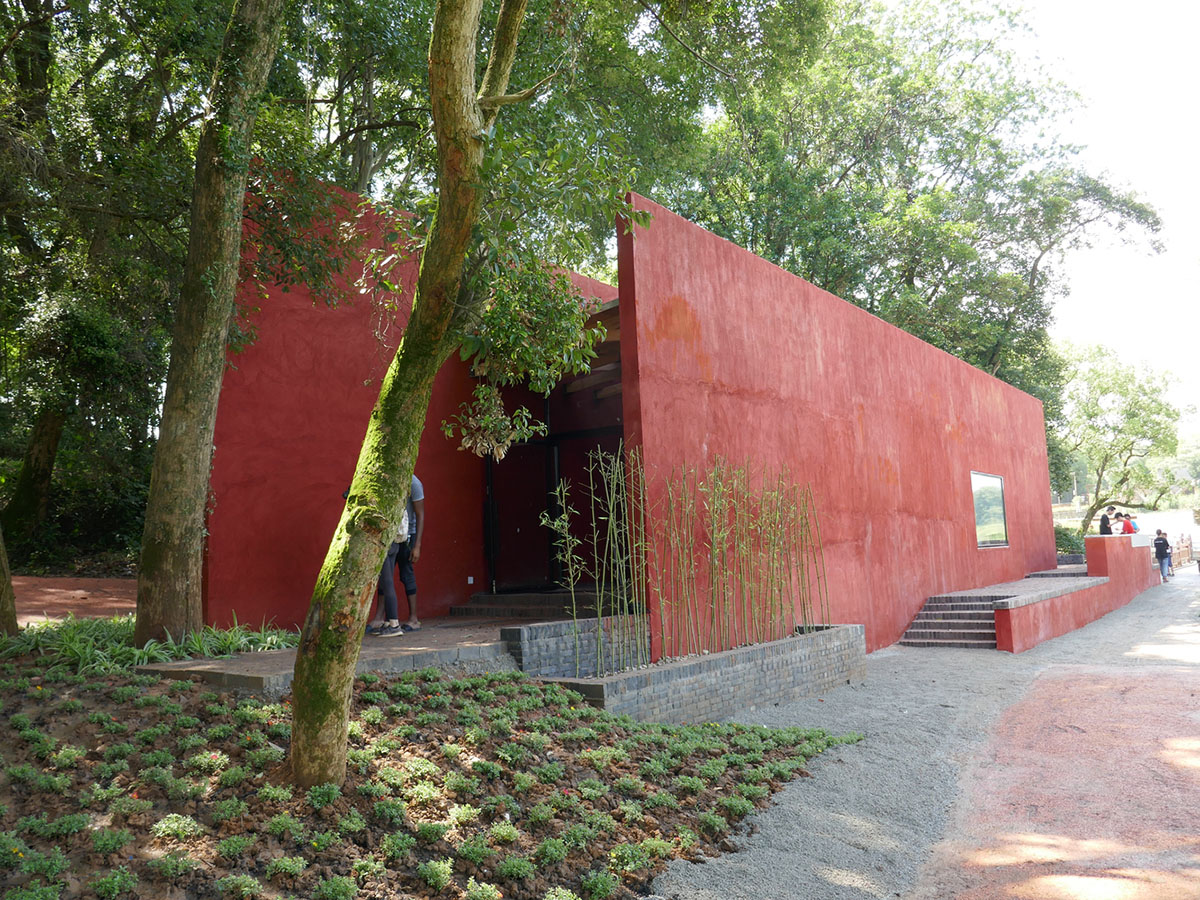
The walls are rendered, inside and out, in sand and white-cement pigmented with ferric oxide, to produce a distinctive "Chinese" red, ubiquitous in historic buildings, such as The Forbidden City in Beijing, and symbolic of happiness in Chinese culture.
Reinforced concrete slabs, finished in a steel trowelled screed, form the floors. Lighter materials link the walls so as to preserve their design integrity. The roof structure is made of timber ‘crosses’ which result in a roof with a central gutter, and double-layered skylights along each wall.
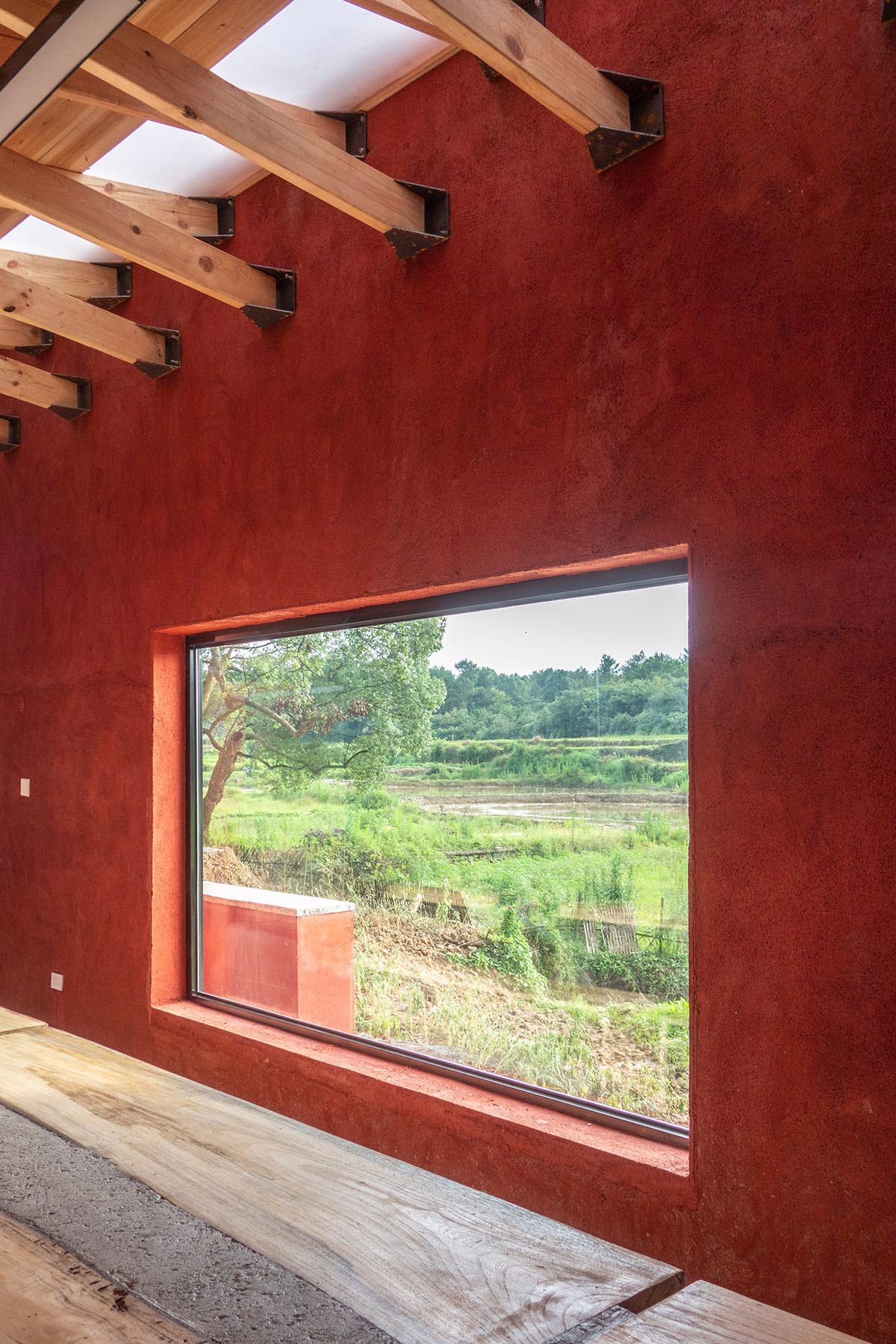
Fully openable glass assemblies close the dining and kitchen spaces at both ends, extending them out into adjoining nature. Outdoor spaces are surfaced in black clay bricks or gravel.
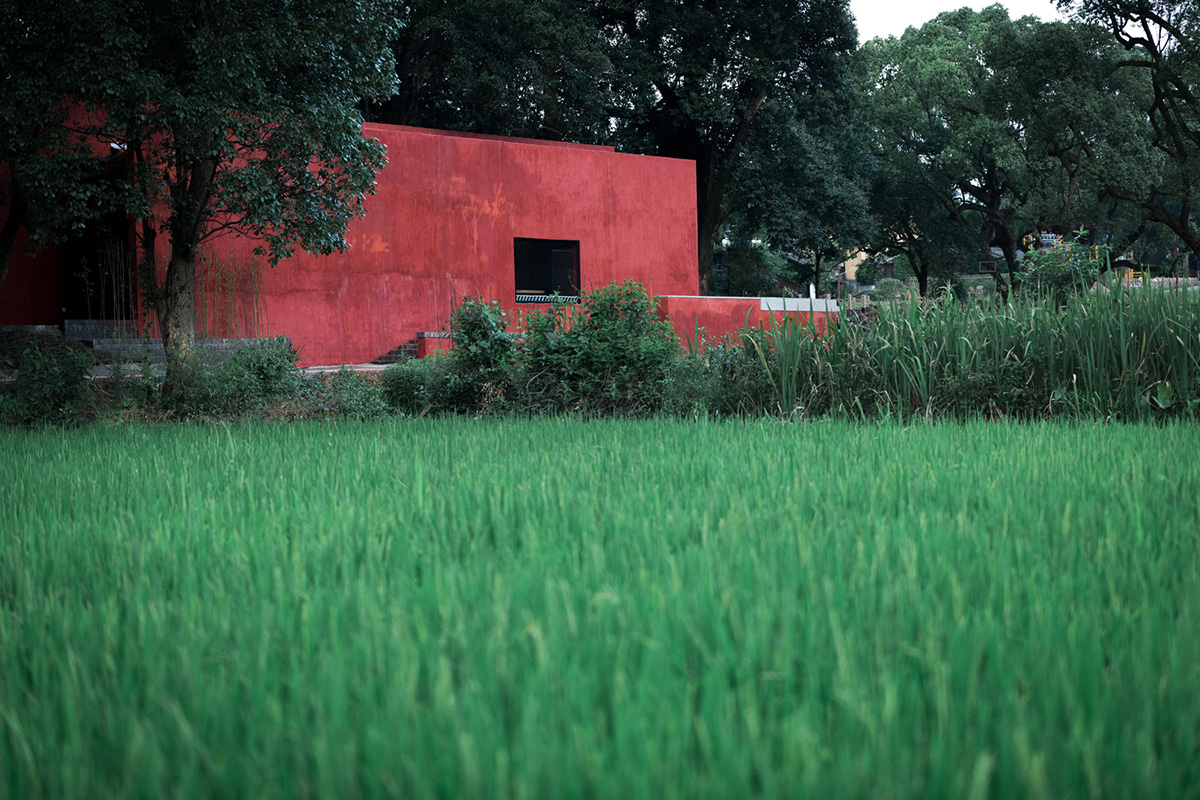
The dining table is 9.5 meter long and built from a large fallen tree found on site; with the spaces between the boards filled with a reinforced concrete. The kitchen furniture is made from a folded thin reinforced concrete slab with the storage under.


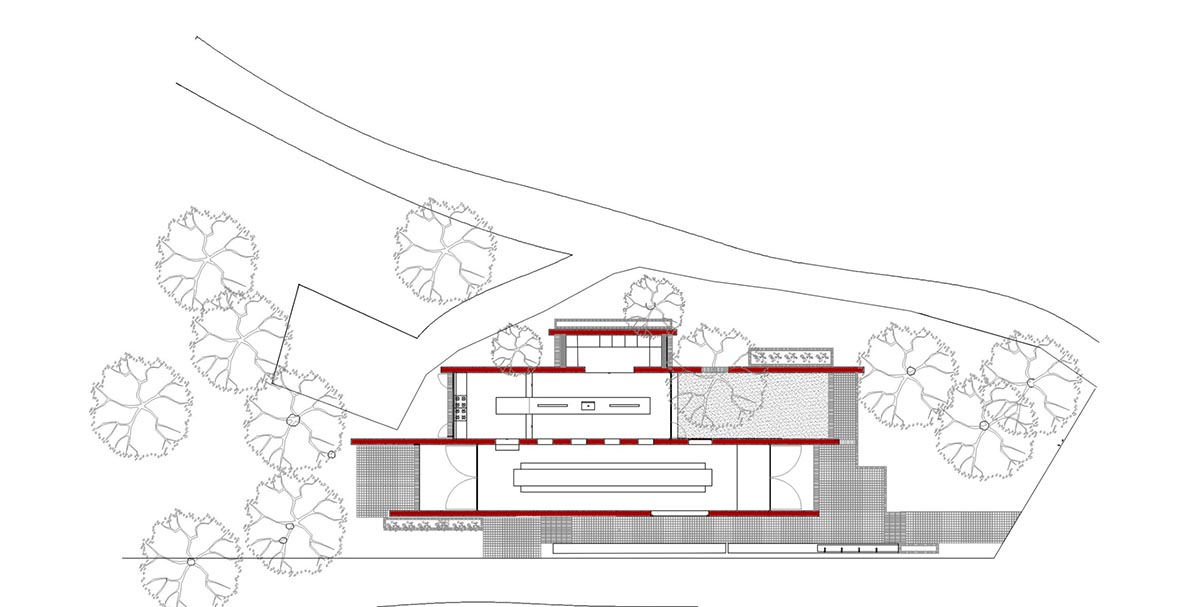
Plan

Detail-1

Detail-2

Detail-3
All images © SCS
> via SCS
